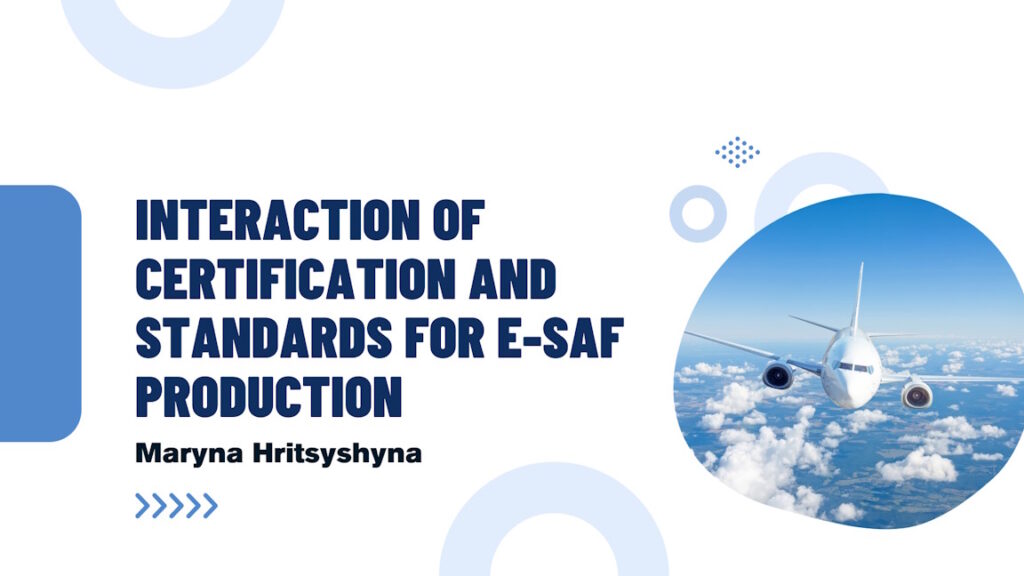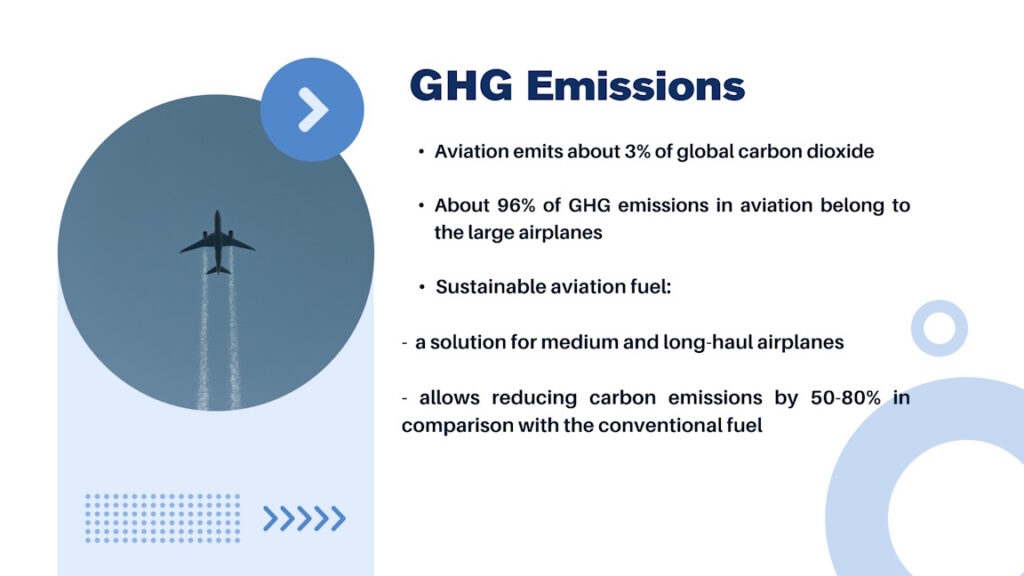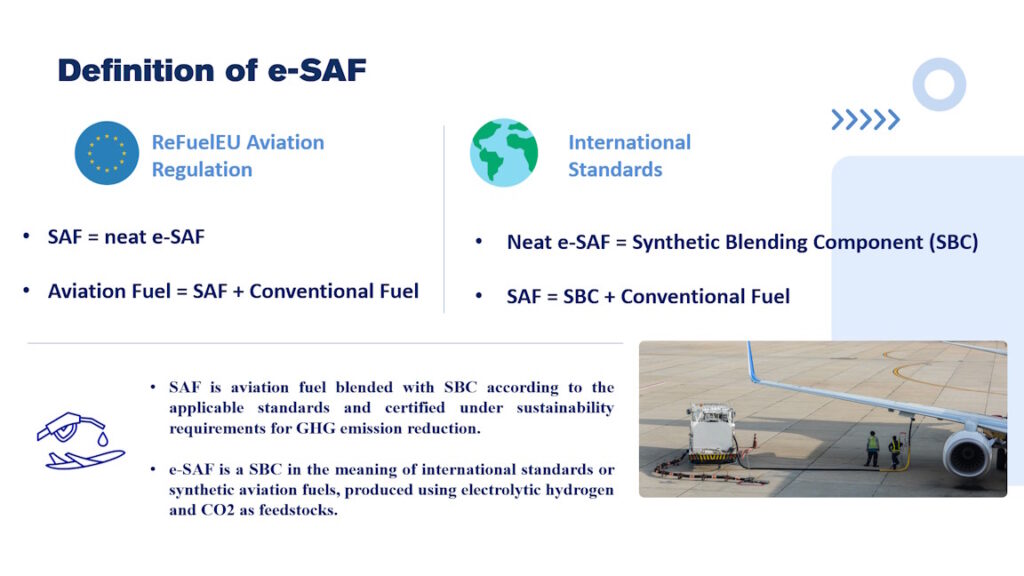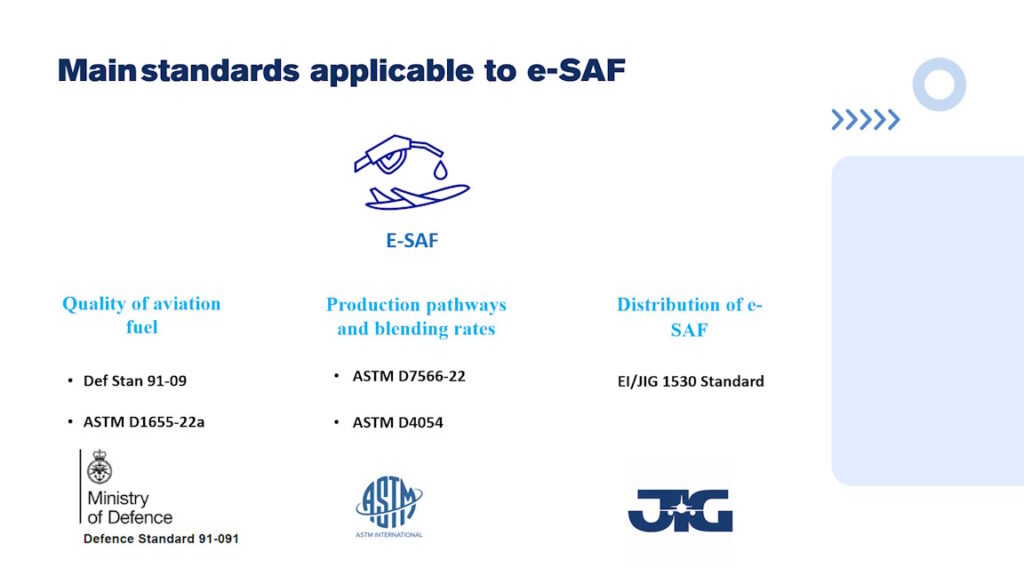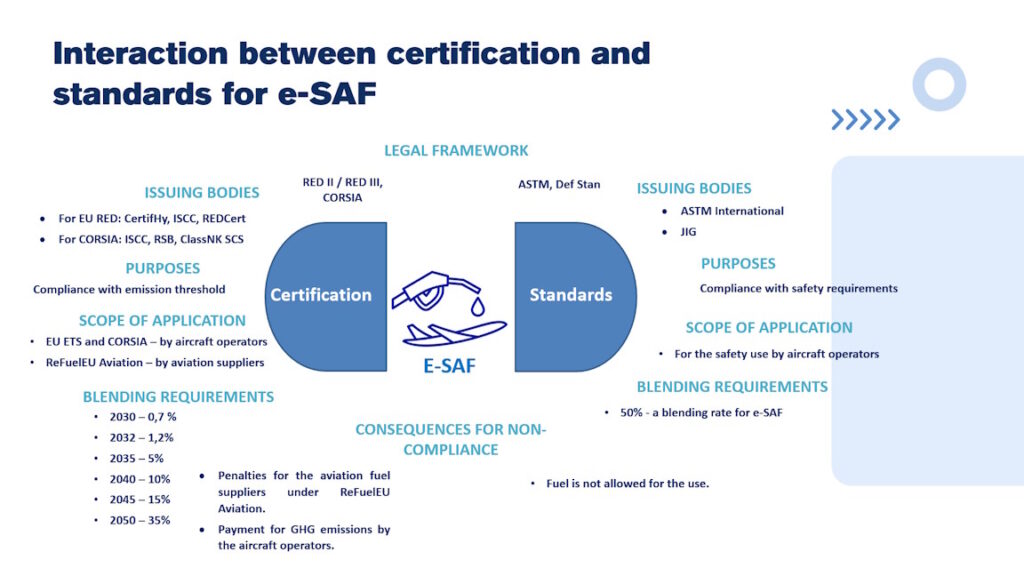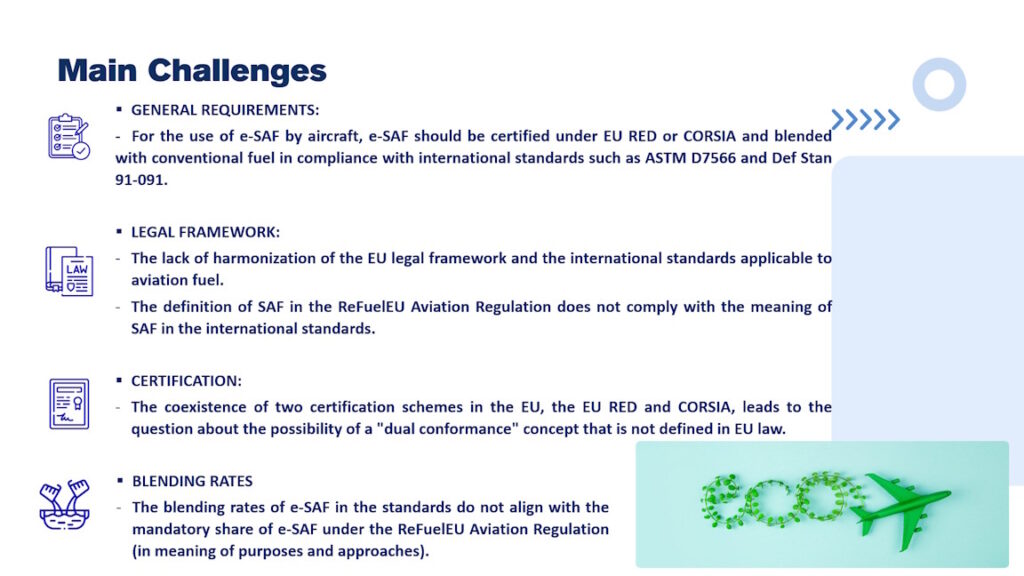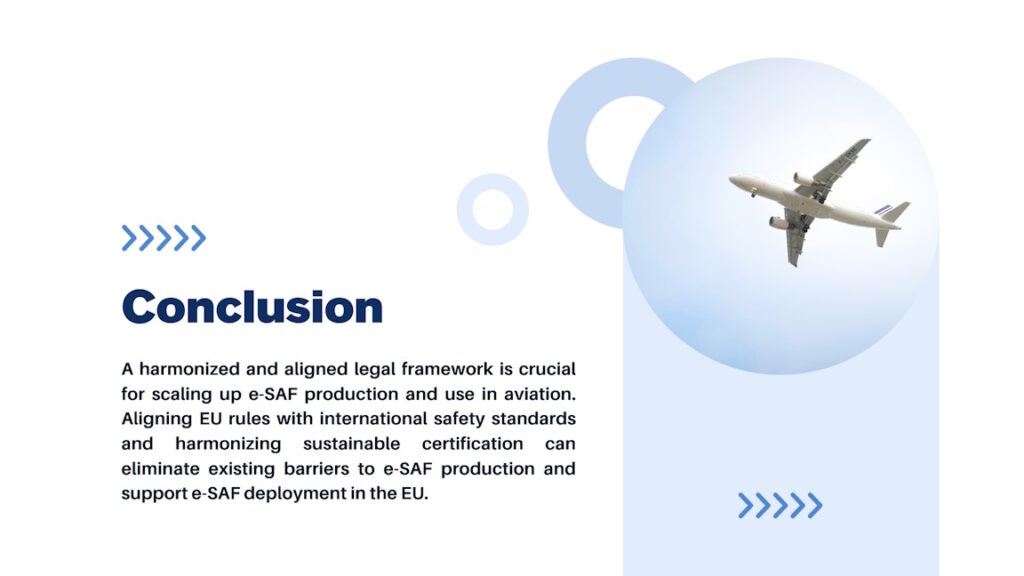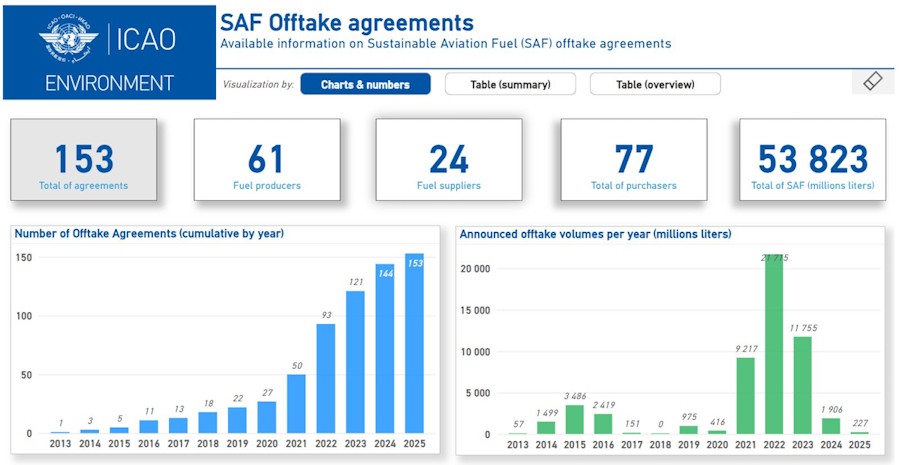Interaction of Certification and Standards for e-SAF Production
Last week, I had the opportunity to present my paper “Interaction of Certification and Standards for e-SAF Production” at a conference hosted by the Florence School of Regulation. This research is part of my broader PhD work on the interaction between law and technology in the regulation of Power-to-X (PtX) technologies.
✅ Key Points of the Presentation:
📌 General requirements
- To be used in aviation, e-SAF must be certified under either the EU Renewable Energy Directive (RED) or the CORSIA scheme, and blended with conventional jet fuel in accordance with international standards such as ASTM D7566 and Def Stan 91-091.
📌 Legal Framework
- There is a lack of harmonization between the EU legal framework and international aviation fuel standards.
- The definition of SAF in the ReFuelEU Aviation Regulation does not align with the definition used in international standards.
📌 Certification
- Particular attention should be given to the concept of “dual conformance” — i.e., a single batch of SAF being compliant with two different certification schemes (such as EU RED and CORSIA).
- The coexistence of two certification schemes – EU RED and CORSIA within the EU raises questions about the feasibility of such dual conformance, a concept that is not yet defined under EU law.
☑️ Conclusion
- A harmonized and coherent legal framework is essential for scaling up e-SAF production and deployment in aviation.
- Aligning EU regulations with international safety and sustainability standards will help remove existing regulatory barriers and support the widespread adoption of e-SAF across the EU.
